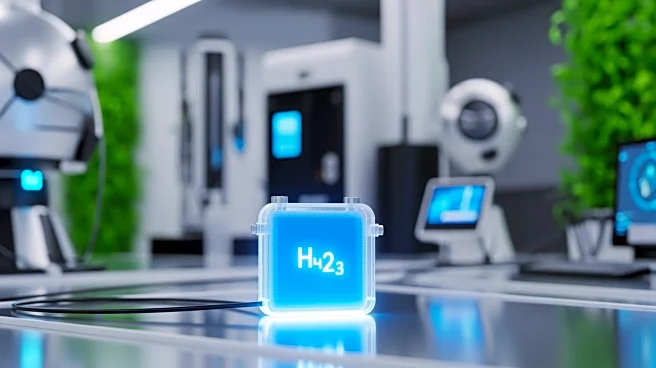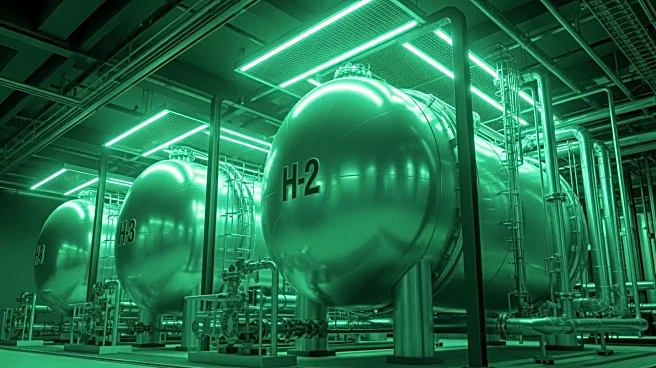What's Happening?
Researchers at City University of Hong Kong have made a significant advancement in the production of green hydrogen, a clean energy source. The team has developed a new type of cathode that can endure
fluctuating power levels during the electrolysis of water into hydrogen and oxygen. This innovation addresses the challenges posed by the inconsistent power output of renewable energy sources like solar and wind, which have historically hindered large-scale hydrogen production. The new system, which has been detailed in the journal Nature, includes a self-healing protective layer that prevents damage from energy input fluctuations, thereby extending the life of electrolyzers. This system has demonstrated stability for over 10,000 hours and requires fewer expensive materials, making it more viable for commercial use.
Why It's Important?
The development of this technology is crucial as it could significantly lower the cost and increase the sustainability of green hydrogen production. Green hydrogen is considered one of the cleanest energy sources, and its large-scale production could replace fossil fuels in various applications, from powering homes and vehicles to industrial uses. This advancement could also aid in reducing pollution, enhancing energy independence, and improving public health by decreasing emissions that contribute to smog. The ability to produce green hydrogen from seawater using renewable electricity offers a sustainable alternative that could transform energy systems globally.
What's Next?
If this technology is developed at scale, it could make green hydrogen a feasible replacement for fossil fuels in numerous sectors, including shipping and home heating. This would contribute to cleaner air and a reduction in global warming. The research also provides a framework for overcoming similar challenges in other clean technologies, such as carbon capture and fuel synthesis, which face intermittent energy supply issues. The next steps involve scaling up the technology for commercial deployment and exploring its application in other clean energy systems.
Beyond the Headlines
This breakthrough not only advances the green hydrogen industry but also sets a precedent for developing resilient systems in other renewable energy technologies. The innovation could lead to long-term shifts in how energy is produced and consumed, promoting a transition to a more sustainable and environmentally friendly energy landscape. The research highlights the potential for technological solutions to address the challenges of renewable energy integration and storage, paving the way for a cleaner and more sustainable future.











